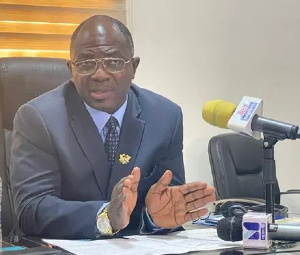Ghana’s oil output rises by 10.7%, revenue surges amid sector challenges
 Newly elected chairman of PIAC, Constantine Kudzedzi Esq.
Newly elected chairman of PIAC, Constantine Kudzedzi Esq.
Ghana’s domestic oil production grew by 10.7% in the first half of 2024, reaching 24.86 million barrels, according to the Public Interest and Accountability Committee (PIAC).
Read full articleThis growth marks a positive shift after four consecutive years of production decline, driven primarily by the launch of the Jubilee South East (JSE) project. This project not only increased production but also generated $840.8 million in revenue in H1 2024—a substantial 55.6% rise from the $540.5 million reported in the same period last year.
PIAC attributes this revenue increase to JSE’s contributions, underscoring the importance of new infrastructure in revitalizing the sector.
Constantine Kudzedzi, PIAC's new chairman, emphasized the need for more government efforts to attract investments, which would sustain growth and maximize output. Despite these gains, the committee expressed concerns about the challenges facing the sector, including unpaid surface rental fees, which now total $1.2 million.
PIAC’s report also highlighted regulatory discrepancies, such as the Ghana Stabilisation Fund (GSF) cap, set at $100 million—far below the $530.1 million recommended by the Petroleum Revenue Management Regulations of 2019.
PIAC called on parliament to address these regulatory gaps, urging that the GSF cap be revised to statutory levels. Additionally, it recommended the Ghana Revenue Authority enforce timely collection of surface rental payments, while also advocating for stronger oversight on the Discounted Industrial Development Tariff (DIDT), which, despite suspension directives, has continued at a reduced rate.
Further, PIAC stressed the need for GNPC to establish a reserve fund as mandated under PNDCL 64 to ensure long-term financial stability. The committee warned that if left unaddressed, these unresolved issues could undermine Ghana’s industrialization goals and weaken the national petroleum sector’s resilience.
Read full article
 Newly elected chairman of PIAC, Constantine Kudzedzi Esq.
Newly elected chairman of PIAC, Constantine Kudzedzi Esq.